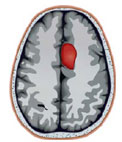|
CAMPANIA: IS THERE A LINK
BETWEEN DUMP AND TUMOURS?
Rome, 20 July, 2004
The protests by the population
of Montecorvino Rovella, faced with the news of the reopening of the rubbish
dump, bring to light again a problem which comes up ever more frequently: is
there a link between the presence of a certain polluting factor and the
onset of tumours in a certain zone? And above all, which data needs to be
used to answer this question? This week, Epicentro, the newsletter of the
National Centre of Epidemology, Surveillance and Health Promotion of the ISS,
opens a focus group to discuss and comment on the subject, which can be
consulted at the address epicentro.iss. Reasoning specifically over the
Campania case, they review the available data, such as those on the main
cause of death, supplied each year by ISTAT, and then elaborated on relating
to the different zones, whether from the ISS statistics office, or from the
local and regional institutions. The mortality data has, however, the defect
of highlighting an exposure which happened at least 15 years before and
which are therefore not very useful in evaluating if a certain environmental
exposure factor could cause current damage. Other more representative data,
is that produced by the Tumour Registers, currently just over 15 in the
whole of Italy, which monitor tumour patients, and therefore give a more
representative snapshot of the actual incidence of the oncological diseases.
More credible are also those studies conducted by micro-areas, and therefore
able to reveal the effective presence of an illness in a restricted zone,
rather than the data of a more extended area, like a province or region.
These studies must also cross the environmental data, which are produced by
ARPA (Regional Prevention and Environment Agency), with health data, also
making use of those relating to the hospital discharge cards and the
malformation registers, which give important indications into the occurrence
of a certain illness in the area. Finally, but no less important, the
experts recommend thinking up and carrying out at the same time, an
effective surveillance system of the diseases in a certain area and a
communication campaign dealing with the public. With the aim of finding a
solution accepted by the litigants, it is important that the population is
aware of the risk levels implicit in each of the solutions and possible
alternatives.(AGI) polluting factor and the
onset of tumours in a certain zone? And above all, which data needs to be
used to answer this question? This week, Epicentro, the newsletter of the
National Centre of Epidemology, Surveillance and Health Promotion of the ISS,
opens a focus group to discuss and comment on the subject, which can be
consulted at the address epicentro.iss. Reasoning specifically over the
Campania case, they review the available data, such as those on the main
cause of death, supplied each year by ISTAT, and then elaborated on relating
to the different zones, whether from the ISS statistics office, or from the
local and regional institutions. The mortality data has, however, the defect
of highlighting an exposure which happened at least 15 years before and
which are therefore not very useful in evaluating if a certain environmental
exposure factor could cause current damage. Other more representative data,
is that produced by the Tumour Registers, currently just over 15 in the
whole of Italy, which monitor tumour patients, and therefore give a more
representative snapshot of the actual incidence of the oncological diseases.
More credible are also those studies conducted by micro-areas, and therefore
able to reveal the effective presence of an illness in a restricted zone,
rather than the data of a more extended area, like a province or region.
These studies must also cross the environmental data, which are produced by
ARPA (Regional Prevention and Environment Agency), with health data, also
making use of those relating to the hospital discharge cards and the
malformation registers, which give important indications into the occurrence
of a certain illness in the area. Finally, but no less important, the
experts recommend thinking up and carrying out at the same time, an
effective surveillance system of the diseases in a certain area and a
communication campaign dealing with the public. With the aim of finding a
solution accepted by the litigants, it is important that the population is
aware of the risk levels implicit in each of the solutions and possible
alternatives.(AGI)
|